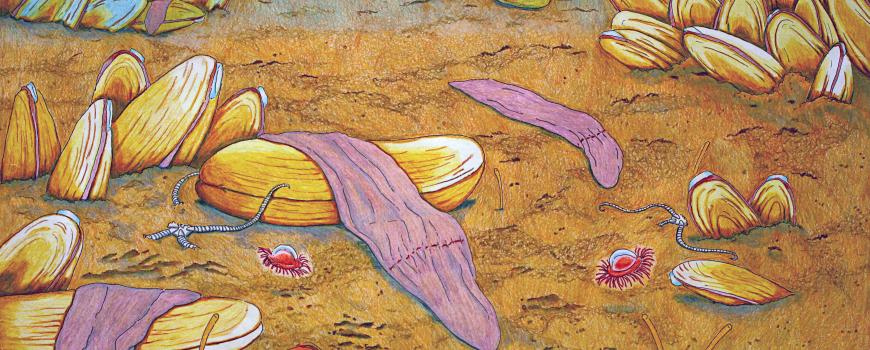 A pink flatworm-like animal known by a single species found in waters off Sweden has puzzled biologists for nearly six decades. New discoveries half a world away by a team of scientists from Scripps Institution of Oceanography at UC San Diego, the Western Australian Museum, and the Monterey Bay Aquarium Research Institute (MBARI) have helped properly identify these elusive creatures through genetic analysis.
A pink flatworm-like animal known by a single species found in waters off Sweden has puzzled biologists for nearly six decades. New discoveries half a world away by a team of scientists from Scripps Institution of Oceanography at UC San Diego, the Western Australian Museum, and the Monterey Bay Aquarium Research Institute (MBARI) have helped properly identify these elusive creatures through genetic analysis.
In the Feb. 4 issue of the journal Nature, the researchers describe four newly discovered species living near deep-sea cold seeps, hydrothermal vents, and whale carcasses off the coasts of California and Mexico. The new discoveries have allowed the scientists to finally stabilize the placement of the five species, all in the genus Xenoturbella, on the animal tree of life.
The 10-centimeter (4-inch) long Xenoturbella churro, named for its resemblance to the popular fried-dough pastry, is one of four species recently discovered that lie near the base of the evolutionary tree of animals. It was found in a 1,700-meter (5,577-foot)-deep cold seep in the Gulf of California.
“The findings have implications for how we understand animal evolution,” said Scripps marine biologist Greg Rouse, the lead author of the study. “By placing Xenoturbella properly in the tree of life we can better understand early animal evolution.=read more=https://scripps.ucsd.edu/news/scripps-led-team-discovers-four-new-deep-sea-worm-species
No comments:
Post a Comment